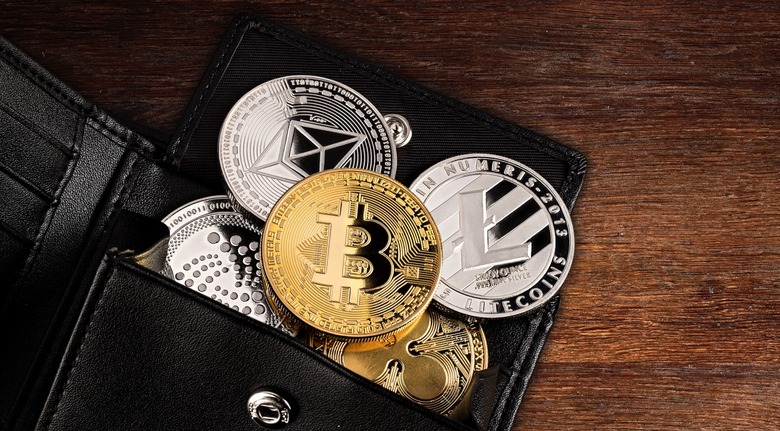Here's Why Congress Is So Worried About The Tether Stablecoin
Bitcoin and all the other digital cryptocurrencies out there have had a massive year so far, with several of them reaching new all-time high valuations. Bitcoin's latest high was just above $69,000 a few days ago, but other digital tokens have witnessed similar surges this year. As more money poured in digital coins and more companies started buying bitcoin, scrutiny from US regulators intensified. Some of the most notable developments include the SEC's lawsuit against Ripple and the bitcoin tax provisions in the infrastructure bill. Joining the list is a new US Congress investigation of Tether.
That's a company that issues a digital US dollar cryptocurrency of the same name that has no connection with the US government. It's a "stablecoin" pegged to the dollar, meaning that a single tether will always have a value of one dollar. But, with a tether supply of $73 billion, regulators are increasingly concerned about this particular stablecoin.
The purpose of stablecoins like tether
People looking to invest in bitcoin and other digital tokens have two ways of doing it. One involves minting the coins using expensive computers that need the latest GPUs or dedicated mining processors. The other is much simpler, as it involves buying bitcoin and other cryptocurrencies from exchanges.
The latter involves funding an account with debit cards or credit cards or transfers from a bank account. PayPal also supports bitcoin purchases and works with exchanges like Coinbase.
But buyers might not be able to pay with regular fiat for specific cryptocurrencies. Or they might not be able to access certain exchanges or specific digital tokens. That's where tether comes into play.
You can buy tether at an exchange, then swap it for tether without losing any value. You can then transfer tether to a different exchange almost instantly and purchase the coin you want.
It's not just tether that works like that. You can use other stablecoins for the same purpose. But US Congress is explicitly interested in how Tether (the company) issues tether.
The US Congress investigation
On Tuesday, the US Senate Committee on Banking, Housing, and Urban sent a letter to Tether CEO Jean-Louis van der Velde. Sen. Sherrod Brown (D-OH) spearheaded the effort as the chair of the Committee.
Brown sent similar letters to various companies, not just Tether. The list includes crypto exchanges and other stablecoin issuers: Coinbase, Gemini, Paxos, TrustToken, Binance.US, and Centre.
Brown says that "stablecoins present investor protection risks and raise several market integrity concerns." That's why he's seeking more information from all these companies.
Tether might be the biggest worry, as it's the most popular stablecoin out there. Tether has been at the center of other inquiries in the past. They are all looking to determine whether the company has actual US dollar reserves to match the number of tether tokens in circulation.
A report from Bloomberg revealed last month that $48 billion worth of tether were issued this year, out of a total of $69 billion. Since then, the number of tether in circulation has increased to $73 billion, and the figure is rising.
A tether collapse might have massive repercussions on the entire crypto landscape and could impact the financial system.
Brown's letter has six questions for Tether, with the senator giving the company until December 3rd to respond.
Questions from the US Congress for Tether
Here are Brown's questions, as listed in the letter:
- Please describe the basic purchase, exchange, or minting process[es] by which customers can acquire Tether for US dollars. In your answer, explain any relevant limitations or qualifications to engaging in and completing that process.
- Please detail the process to redeem Tether and receive US dollars. Here, also, identify any requirements or limits, including any minimum redemption size, waiting period, or qualifications.
- Since Tether's inception, how many Tether tokens have been issued, and how many have been redeemed? Over the last 12 months, what is the greatest percentage of the Tether in circulation at the beginning of a calendar week to be redeemed in the subsequent seven days?
- Briefly characterize the market or operational conditions that would prevent the purchase, or redemption, of Tether for US dollars, or another digital asset. For purposes of answering this question, do not list or describe legal or regulatory limitations currently described in a user agreement or terms of service. For each condition identified, please provide at least one example that occurred in the past 12 months and its duration.
- Please identify any trading platforms that have enhanced capabilities, privileges, or special arrangements with respect to Tether, identifying those features and their basis (e.g., contractual or common control).
- Please summarize any internal reviews or studies your company has conducted about how specific levels of redemptions would affect Tether, including its convertibility into US dollars, or would affect the financial position of your company.
